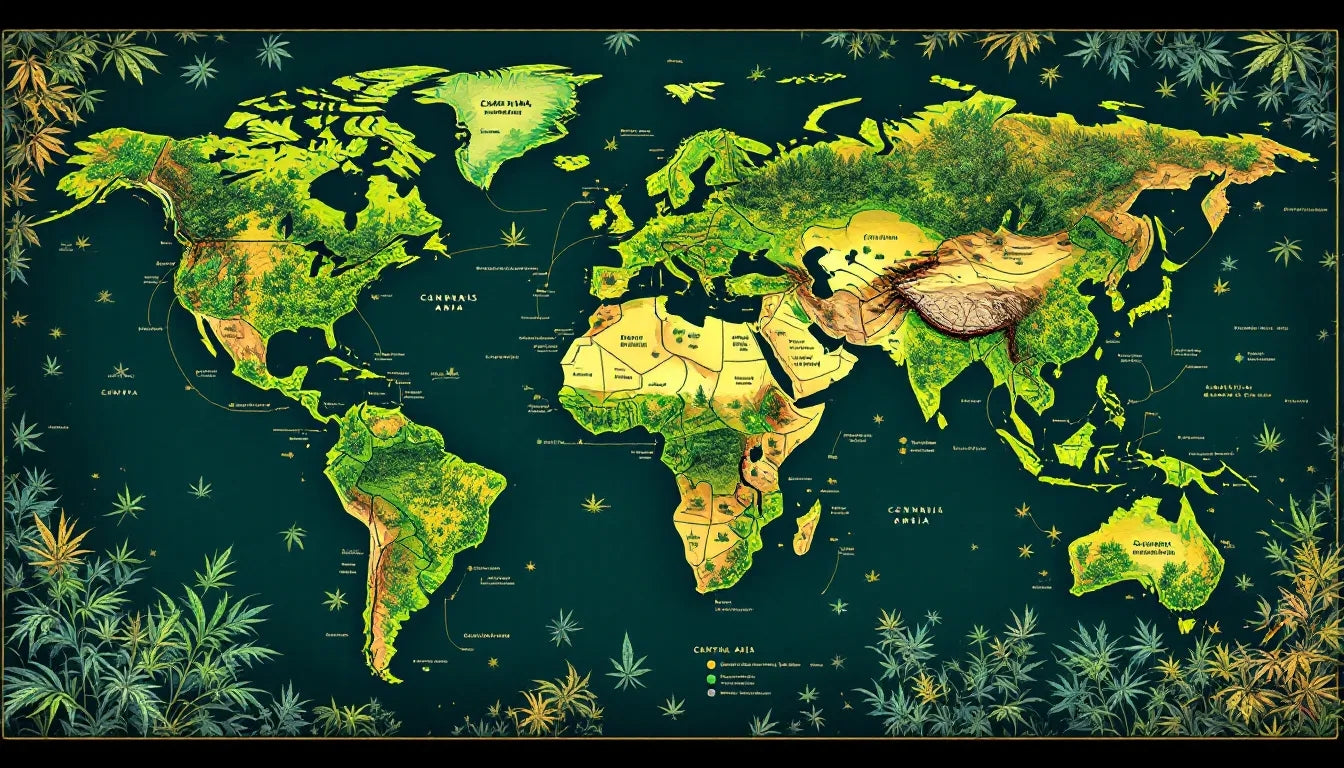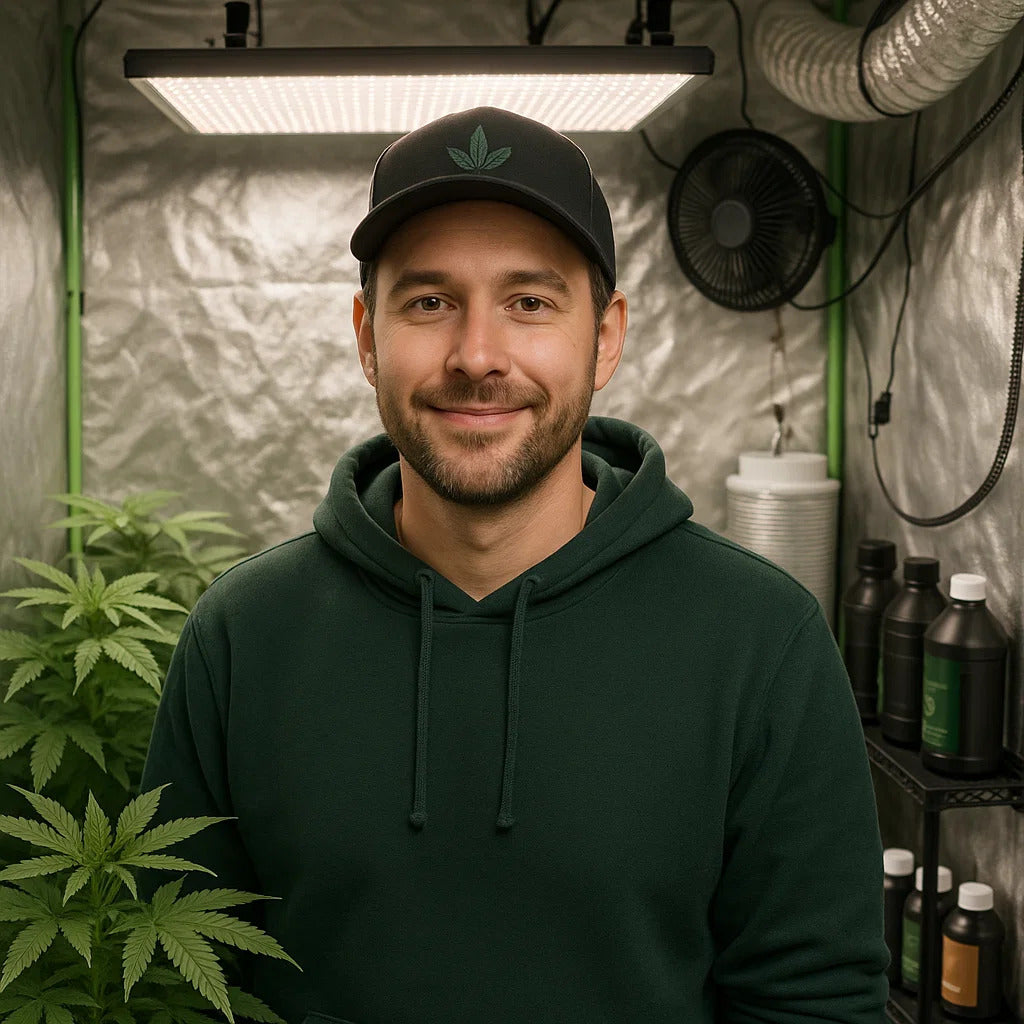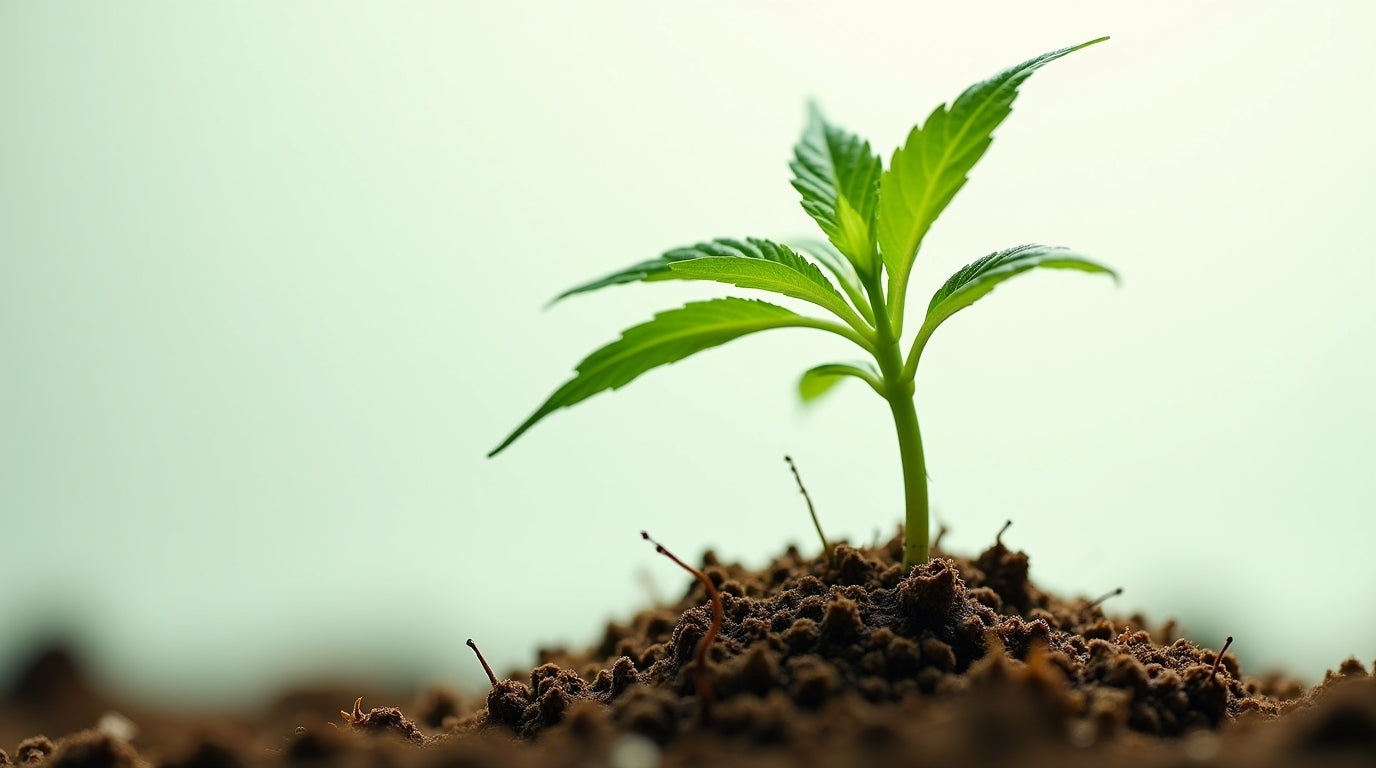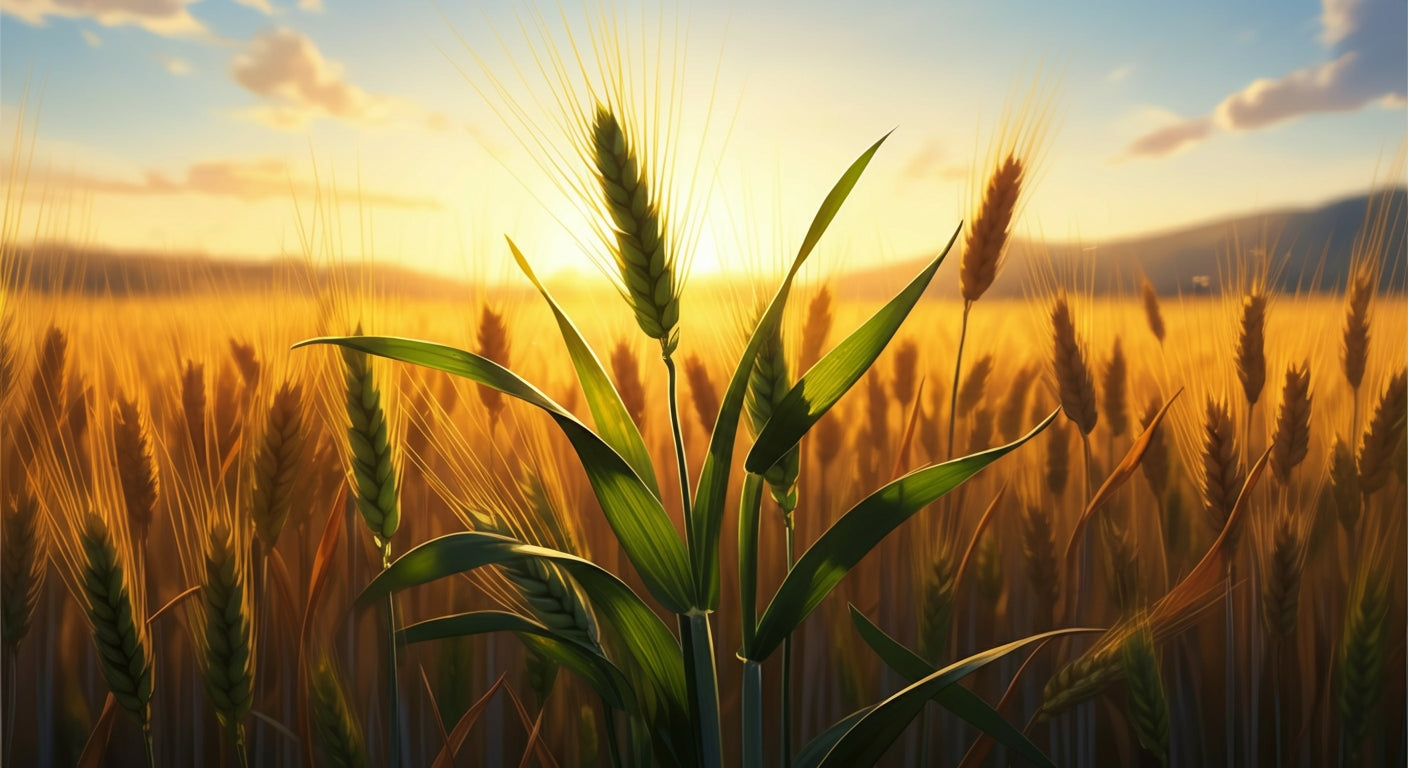
Where Does Plant Grow Naturally? Exploring Plant Origins and Wild Habitats Around the World
The plant grows naturally in diverse climates across the globe, with its origins tracing back to Central Asia, particularly the Hindu Kush mountain range and Himalayan foothills. Wild plants (often called "feral plants" or "ditch weed") can now be found growing on every continent except Antarctica, from the cold steppes of Russia to the tropical regions of Jamaica and Mexico. The plant's remarkable adaptability has allowed it to spread worldwide through human cultivation and natural seed dispersal.
Understanding where the plant grows naturally provides valuable insights into optimal growing conditions and helps explain the diverse characteristics of different strains available today.

Origins: The Birthplace of the Plant
The plant originated in Central Asia approximately 3,000-5,000 years ago, with the most likely birthplace being the regions of modern-day Kazakhstan, Kyrgyzstan, Tajikistan, and the borderlands between Afghanistan and Pakistan. Recent genetic studies suggest the plant may have first evolved in East Asia before spreading throughout the Central Asian steppes.
Historical Distribution
Ancient origins:
- Central Asian steppes: Original homeland and genetic center
- Hindu Kush Mountains: Primary source of Cannabis indica genetics
- Himalayan foothills: High-altitude landrace strains
- Siberian regions: Cannabis ruderalis evolution
Early human spread:
- 3000 BCE: Cultivation in China for fiber and medicine
- 2000 BCE: Spread to India and Middle East
- 1000 BCE: Reached Europe and North Africa
- 1500s CE: Brought to the Americas by European colonists
The plant's journey from its Central Asian origins to worldwide distribution is one of humanity's most successful agricultural achievements, with the plant adapting to virtually every climate zone along the way.
The Three Species and Their Natural Habitats
The plant has evolved into three distinct species (or subspecies), each adapted to specific environmental conditions and geographic regions.
Cannabis Sativa: Tropical and Equatorial Regions
Natural habitat characteristics:
- Climate: Warm, humid tropical and subtropical regions
- Latitude: Near the equator (0-30° north/south)
- Temperature: 70-85°F (21-29°C) year-round
- Rainfall: High humidity and regular precipitation
- Light cycle: Consistent 12-13 hour days year-round
Primary natural regions:
- Southeast Asia: Thailand, Vietnam, Cambodia, Laos
- Central America: Mexico, Guatemala, Belize
- Caribbean: Jamaica, Cuba, Trinidad
- South America: Colombia, Brazil, Ecuador
- Africa: Nigeria, Ghana, Congo Basin
- India: Southern and coastal regions
Sativa adaptations:
- Tall, lanky growth (up to 20+ feet in wild)
- Narrow leaves for heat/humidity management
- Long flowering periods (10-16 weeks)
- High disease resistance in humid climates
- Extended growth cycles matching tropical seasons
Cannabis Indica: Mountainous and Arid Regions
Natural habitat characteristics:
- Climate: Dry, arid, and semi-arid mountainous regions
- Latitude: 30-50° north (primarily)
- Temperature: Cooler with significant day/night variations
- Rainfall: Lower precipitation, often seasonal
- Altitude: High-elevation valleys and slopes
- Light cycle: Shorter growing seasons
Primary natural regions:
- Afghanistan: Hindu Kush valleys and mountains
- Pakistan: Northern tribal regions and Kashmir
- India: Himalayan foothills and northern mountains
- Nepal: High-altitude valleys
- Tajikistan: Mountainous regions
- Morocco: Atlas Mountains
- Lebanon: Bekaa Valley
Indica adaptations:
- Short, bushy structure (3-8 feet typical)
- Broad leaves for maximum light absorption
- Faster flowering (6-8 weeks)
- Cold resistance and hardy growth
- Dense bud structure for seed protection
Cannabis Ruderalis: Northern and Harsh Climates
Natural habitat characteristics:
- Climate: Harsh, cold, and short growing seasons
- Latitude: 45-70° north
- Temperature: Extreme seasonal variations
- Growing season: Very short summers (3-4 months)
- Light cycle: Extreme variations from 24-hour days to near darkness
- Soil: Often poor, disturbed, or "ruderal" environments
Primary natural regions:
- Russia: Siberia and Central Russia
- Eastern Europe: Poland, Czech Republic, Slovakia
- Mongolia: Steppes and mountainous regions
- Northern China: Northeastern provinces
- Kazakhstan: Northern regions
- Baltic States: Lithuania, Latvia, Estonia
Ruderalis adaptations:
- Very short stature (1-2.5 feet maximum)
- Auto-flowering genetics (flowers by age, not light)
- Extremely hardy and cold-resistant
- Low THC, higher CBD content
- Rapid lifecycle (8-10 weeks total)
Modern Wild Plant Distribution
Today, the plant grows wild across six continents, often in areas where it was historically cultivated but later abandoned.
North America: "Ditch Weed" Phenomenon
Wild plants are common throughout the American Midwest, primarily descended from World War II-era hemp cultivation.
Major wild growing regions:
- Iowa: Largest concentrations nationally
- Indiana: Extensive wild populations
- Missouri: Common along roadways and waterways
- Nebraska: Prairie and agricultural areas
- Minnesota: Northern forests and abandoned farmland
- Oklahoma: Southern Great Plains
- Kansas: Central agricultural regions
Characteristics of North American wild plants:
- Low THC content (usually under 1%)
- Hardy, weed-like growth patterns
- Grows in disturbed soils and roadsides
- Descendants of industrial hemp varieties
- Survives harsh winter conditions
Asia: Original Homeland
Wild plants remain abundant throughout their native Asian range, often with higher potency than escaped populations elsewhere.
Current wild populations:
- Afghanistan: Mountain valleys with high-potency plants
- Pakistan: Northern regions, source of "hash plants"
- India: Himalayan foothills, wild "charas" strains
- Nepal: High-altitude landrace varieties
- China: Northern and western provinces
- Russia: Siberian regions, ruderalis populations
Europe: Scattered Wild Populations
European wild plants include both escaped hemp varieties and native ruderalis populations.
Notable European regions:
- Romania: Carpathian Mountain regions
- Ukraine: Eastern agricultural areas
- Russia: Western regions and Siberia
- Poland: Forest edges and disturbed areas
- Hungary: Pannonian Plain regions
Africa: Diverse Climate Adaptations
The plant grows wild across much of Africa, adapted to various climate zones from Mediterranean to tropical.
African wild plant regions:
- Morocco: Rif Mountains
- South Africa: Various provinces, landrace "dagga"
- Malawi: High-altitude sativa varieties
- Lesotho: Mountain kingdom strains
- Zambia: Central African varieties
- Nigeria: West African populations
Central and South America: Tropical Adaptations
The plant thrives in the warm, humid climates of Central and South America.
Wild populations:
- Mexico: Various regions, sativa dominance
- Jamaica: Blue Mountains and rural areas
- Colombia: Mountain valleys and coastal regions
- Brazil: Amazon basin and southeastern areas
Environmental Factors for Natural Growth
Understanding the environmental conditions where the plant grows naturally helps explain optimal cultivation requirements.
Climate Requirements
Temperature preferences:
- Optimal range: 65-85°F (18-29°C)
- Minimum survival: Above 32°F (0°C)
- Maximum tolerance: Up to 100°F (38°C) with adequate water
Humidity considerations:
- Vegetative growth: 40-70% relative humidity
- Flowering stage: 40-50% relative humidity
- Adaptation range: 20-90% depending on strain
Light requirements:
- Minimum: 6-8 hours direct sunlight daily
- Optimal: 10-14 hours during growing season
- Seasonal variation: Photoperiod strains require changing day length
Soil and Growing Medium
Natural soil preferences:
- pH range: 6.0-7.5 (slightly acidic to neutral)
- Drainage: Well-draining, never waterlogged
- Nutrients: Moderate fertility, adaptable to poor soils
- Texture: Sandy loam to clay loam ideal
Natural growing locations:
- River valleys: Rich alluvial soils with good drainage
- Mountain slopes: Well-draining hillsides with sun exposure
- Forest edges: Partial shade with organic-rich soil
- Disturbed areas: Roadsides, abandoned fields, clear-cuts
Water Requirements
Natural water sources:
- Annual rainfall: 20-60 inches per year optimal
- Seasonal patterns: Wet growing season, dry harvest period
- Water table: Access to groundwater beneficial
- Natural irrigation: Streams, springs, seasonal flooding
Learning From Natural Habitats
Understanding where the plant grows naturally provides valuable insights for cultivation, whether in legal home grows or commercial operations.
Applying Natural Conditions to Indoor Growing
The diverse natural habitats demonstrate the plant's adaptability and provide a blueprint for optimal growing conditions.
Professional indoor cultivation systems:
Recreating natural environments indoors requires precise environmental control. Gorilla Grow Tents provide the controlled environment necessary to simulate optimal natural growing conditions while maximizing plant health and yield.
Essential equipment for natural condition simulation:
-
Climate-Controlled Environment: Professional grow tent systems create microclimates that can replicate the temperature, humidity, and air circulation patterns found in natural habitats.
-
Full-Spectrum Lighting: LED grow light systems mimic the natural sunlight that wild plants receive, providing the optimal light spectrum for each growth stage.
-
Precision Nutrition: Lotus Nutrients deliver the balanced nutrition that wild plants naturally obtain from diverse soil ecosystems.
-
Environmental Controls: Proper ventilation, temperature regulation, and humidity management recreate the natural air movement and climate variations that strengthen wild plants.
Strain Selection Based on Natural Origins
For cool climates: Choose indica-dominant strains or those with ruderalis genetics For warm, humid climates: Sativa-dominant varieties thrive For short growing seasons: Autoflowering strains (ruderalis hybrids) For high altitudes: Mountain-adapted indica varieties For variable climates: Hybrid strains with diverse genetic backgrounds

Conservation of Wild Genetics
Wild plant populations face threats from habitat destruction, climate change, and eradication programs, making conservation efforts increasingly important.
Threats to Natural Populations
Human-caused threats:
- Habitat destruction: Urban development and agriculture
- Eradication programs: Government plant removal efforts
- Pollution: Chemical contamination of natural habitats
- Climate change: Shifting temperature and precipitation patterns
Natural threats:
- Genetic bottlenecks: Isolation of small populations
- Disease pressure: Pathogens affecting wild populations
- Competition: Invasive species displacing native plants
- Natural disasters: Fires, floods, extreme weather events
Importance of Landrace Preservation
Genetic diversity benefits:
- Disease resistance: Natural immunity to local pathogens
- Climate adaptation: Traits for specific environmental conditions
- Novel compounds: Unique cannabinoid and terpene profiles
- Breeding potential: Genetic material for future strain development
Conservation efforts:
- Seed banking: Preserving genetic material for future use
- In-situ conservation: Protecting natural habitats
- Documentation: Recording characteristics of wild populations
- Sustainable collection: Gathering genetics without depleting populations
Wild Plants Around the World: Regional Highlights
Hindu Kush Mountains: The Indica Heartland
The Hindu Kush mountain range spanning Afghanistan and Pakistan remains the genetic center for Cannabis indica varieties.
Notable characteristics:
- High-altitude adaptation: 4,000-8,000 feet elevation
- Resin production: Heavy trichome development for UV protection
- Short flowering: Adapted to brief mountain summers
- Cold resistance: Survives frost and snow
- Hash tradition: Source of world's finest hashish
Jamaica: Tropical Sativa Paradise
Jamaican Blue Mountains and rural areas harbor unique landrace sativa varieties.
Famous Jamaican landraces:
- Lamb's Bread: Energetic, creative effects
- King's Bread: Uplifting mountain variety
- Blue Mountain: High-altitude adaptation
- Accompong: Traditional Maroon varieties
Malawi: African Sativa Genetics
Malawi Gold represents some of Africa's most prized landrace genetics.
Characteristics:
- Extreme sativa traits: Very tall, long flowering
- Unique effects: Energetic, psychedelic properties
- High-altitude growth: Mountain and plateau varieties
- Traditional use: Integrated into local culture
Northern Russia: Ruderalis Homeland
Siberian steppes remain the primary habitat for wild Cannabis ruderalis.
Ruderalis traits:
- Extreme hardiness: Survives harsh winters
- Auto-flowering: Independent of light cycles
- Low maintenance: Thrives in poor conditions
- CBD dominance: High medicinal cannabinoid content
Modern Implications of Natural Distribution
Understanding natural distribution has practical applications for modern cultivation and breeding programs.
Climate Matching for Outdoor Growing
Selecting strains by climate similarity:
- Mediterranean climates: Afghan and Pakistani varieties
- Tropical regions: Southeast Asian and Central American strains
- Continental climates: Eastern European and Russian genetics
- High altitude: Himalayan and mountain varieties
Predicting Adaptation Potential
Environmental stress tolerance:
- Heat tolerance: Tropical and desert-adapted strains
- Cold resistance: Mountain and northern varieties
- Humidity tolerance: Rainforest and coastal genetics
- Drought resistance: Arid-adapted landraces
Breeding for Specific Environments
Using wild genetics for improvement:
- Disease resistance: Incorporating natural immunity
- Climate adaptation: Breeding for local conditions
- Yield optimization: Combining wild hardiness with domestic productivity
- Novel compounds: Accessing unique cannabinoid profiles
Frequently Asked Questions
Where did the plant originally come from?
The plant originated in Central Asia, specifically the Hindu Kush mountain range and surrounding regions of modern-day Afghanistan, Pakistan, and nearby countries, approximately 3,000-5,000 years ago.
Can the plant grow wild anywhere?
The plant can grow wild in most temperate and tropical climates but requires adequate sunlight, water, and temperatures above freezing. It grows on every continent except Antarctica but thrives best in its native climate ranges.
What is "ditch weed" and where does it grow?
Ditch weed refers to wild plants that grow along roadsides and in abandoned areas, particularly common in the American Midwest. It's typically low in THC and descended from historical hemp cultivation.
Are there still wild high-THC plants?
Yes, particularly in the plant's native range in Central Asia and other regions where landrace strains grow wild. However, most wild plants have lower THC than commercially bred varieties.
How did the plant spread around the world?
The plant spread globally through human cultivation and trade routes over thousands of years, followed by natural seed dispersal and adaptation to local climates in each new region.
Summary: Natural Habitat and Origins
The plant naturally grows across six continents, originating in Central Asia's Hindu Kush region before spreading worldwide through human cultivation and natural adaptation. The plant's remarkable environmental adaptability allows it to thrive in climates ranging from tropical rainforests to cold northern steppes. Understanding these natural habitats provides crucial insights for optimal cultivation conditions and strain selection.
Ready to recreate optimal natural growing conditions? Professional indoor equipment allows growers to simulate the environmental conditions where plants thrive naturally. Complete grow tent systems and precision growing equipment help recreate the climate control, lighting, and environmental conditions that wild plants experience in their native habitats, leading to healthier plants and better yields.
The story of where the plant grows naturally is ultimately the story of human civilization itself—a remarkable plant that has adapted, evolved, and thrived alongside humanity across the globe.

Lena Myles
I'm a mushroom enthusiast and home cook based in Oregon. I'm passionate about foraging and creating fungi-focused recipes, especially delicious, plant-based dishes using gourmet mushrooms like trumpet, shiitake, and oyster. When I’m not in the kitchen, you’ll usually find me wandering the woods in search of new wild flavors.


